Filter by
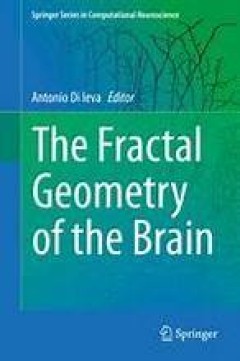
The Fractal Geometry of the Brain
Reviews the most intriguing applications of fractal analysis in neuroscience with a focus on current and future potential, limits, advantages, and disadvantages. Will bring an understanding of fractals to clinicians and researchers also if they do not have a mathematical background, and will serve as a good tool for teaching the translational applications of computational models to students and…
- Edition
- 1
- ISBN/ISSN
- 978-1-4939-3995-4
- Collation
- XXII, 585, 89 b/w illustrations, 86 illustrations in colour
- Series Title
- Springer Series in Computational Neuroscience
- Call Number
- -

Translational Research in Pain and Itch
This book provides a comprehensive review of the latest advances in translational pain and itch research, and presents the cutting-edge developments in the study of our two principal, yet most mysteries sensations. Despite the slow progress in the discovery of effective therapies for chronic pain and pruritus, scientists around the globe now have a better understanding of why and how these cond…
- Edition
- -
- ISBN/ISSN
- 978-94-017-7537-3
- Collation
- -
- Series Title
- -
- Call Number
- -
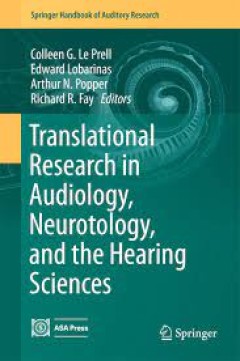
Translational Research in Audiology, Neurotology, and the Hearing Sciences
Translational Research is the interface between basic science and human clinical application, including the entire process from animal studies to human clinical trials (phases I, II, and III). Translational Research moves promising basic science results from the laboratory to bedside application. Yet, this transition is often the least-defined, least-understood part of the research process. Mos…
- Edition
- -
- ISBN/ISSN
- 978-3-319-40848-4
- Collation
- -
- Series Title
- -
- Call Number
- -
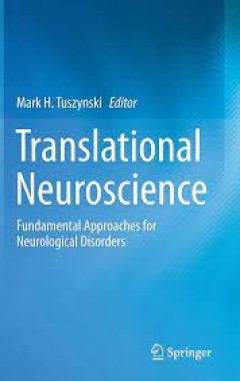
Translational Neuroscience Fundamental Approaches for Neurological Disorders
Translational Neuroscience offers a far-reaching and insightful series of perspectives on the effort to bring potentially revolutionary new classes of therapies to the clinic, thereby transforming the treatment of human nervous system disorders. Great advances in the fields of basic neuroscience, molecular biology, genomics, gene therapy, cell therapy, stem cell biology, information technology,…
- Edition
- -
- ISBN/ISSN
- 978-1-4899-7654-3
- Collation
- -
- Series Title
- -
- Call Number
- -

Translational Neuropsychopharmacology
This book covers wide areas of animal and human psychopharmacology with clinical utility in the treatment of psychiatric and neurological (e.g Alzheimer's disease) disorders. The main theme is to develop a new paradigm for drug discovery that questions the claim that animal models or assays fail adequately to predict Phase 3 clinical trials. A new paradigm is advocated that stresses the importa…
- Edition
- -
- ISBN/ISSN
- 978-3-319-33913-9
- Collation
- -
- Series Title
- -
- Call Number
- -
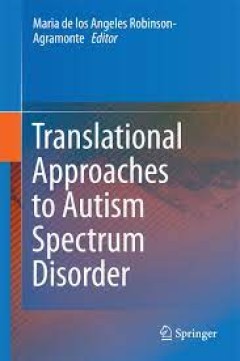
Translational Approaches to Autism Spectrum Disorder
This book addresses and synthesizes recent basic, translational, and clinical research with the goal of understanding the mechanisms behind autism spectrum disorder (ASD) and how they lead to altered brain function and behavior. Bringing clarity to these mechanisms will lead to more effective therapies for the various heterogeneous pathologies that comprise ASD. Currently there are few, if any,…
- Edition
- -
- ISBN/ISSN
- 978-3-319-16321-5
- Collation
- -
- Series Title
- -
- Call Number
- -
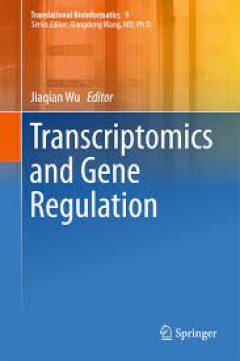
Transcriptomics and Gene Regulation
This volume focuses on modern computational and statistical tools for translational gene expression and regulation research to improve prognosis, diagnostics, prediction of severity, and therapies for human diseases. It introduces some of state of the art technologies as well as computational and statistical tools for translational bioinformatics in the areas of gene transcription and regulatio…
- Edition
- -
- ISBN/ISSN
- 978-94-017-7450-5
- Collation
- -
- Series Title
- -
- Call Number
- -

The Enteric Nervous System
Nearly 30 years ago, a number of scientists working on the Enteric Nervous System (ENS) gathered at Flinders University, in Adelaide, Australia to discuss the advances and future of their research. It was a friendly and stimulating meeting, attended by most of the major players, in what was to become the discipline of ‘Neurogastroenterology'. In 2014, the main Australasian Neuroscience Soc…
- Edition
- 1
- ISBN/ISSN
- 978-3-319-27592-5
- Collation
- XIV, 234, 14 b/w illustrations, 27 illustrations in colour
- Series Title
- Advances in Experimental Medicine and Biology
- Call Number
- -
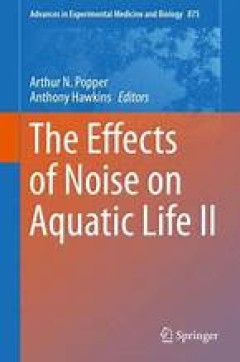
The Effects of Noise on Aquatic Life II
The meeting of Aquatic Noise 2013 will introduce participants to the most recent research data, regulatory issues and thinking about effects of man-made noise and will foster critical cross-disciplinary discussion between the participants. Emphasis will be on the cross-fertilization of ideas and findings across species and noise sources. As with its predecessor, The Effects of Noise on Aquatic …
- Edition
- 1
- ISBN/ISSN
- 978-1-4939-2981-8
- Collation
- XXX, 1292, 97 b/w illustrations, 138 illustrations in colour
- Series Title
- Advances in Experimental Medicine and Biology
- Call Number
- -
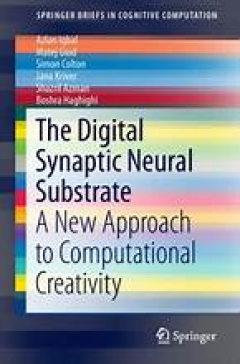
The Digital Synaptic Neural Substrate
This book describes a new computational approach to creativity. With chess as the domain of investigation, the authors show experimentally how a computer can be imbued with the 'spark' of creativity that enables it to compose chess problems or puzzles that are both challenging and aesthetically appealing to humans. This new approach called the Digital Synaptic Neural Substrate (DSNS) mimics the…
- Edition
- 1
- ISBN/ISSN
- 978-3-319-28079-0
- Collation
- XV, 119, 9 b/w illustrations, 4 illustrations in colour
- Series Title
- SpringerBriefs in Cognitive Computation
- Call Number
- -
 Computer Science, Information & General Works
Computer Science, Information & General Works  Philosophy & Psychology
Philosophy & Psychology  Religion
Religion  Social Sciences
Social Sciences  Language
Language  Pure Science
Pure Science  Applied Sciences
Applied Sciences  Art & Recreation
Art & Recreation  Literature
Literature  History & Geography
History & Geography